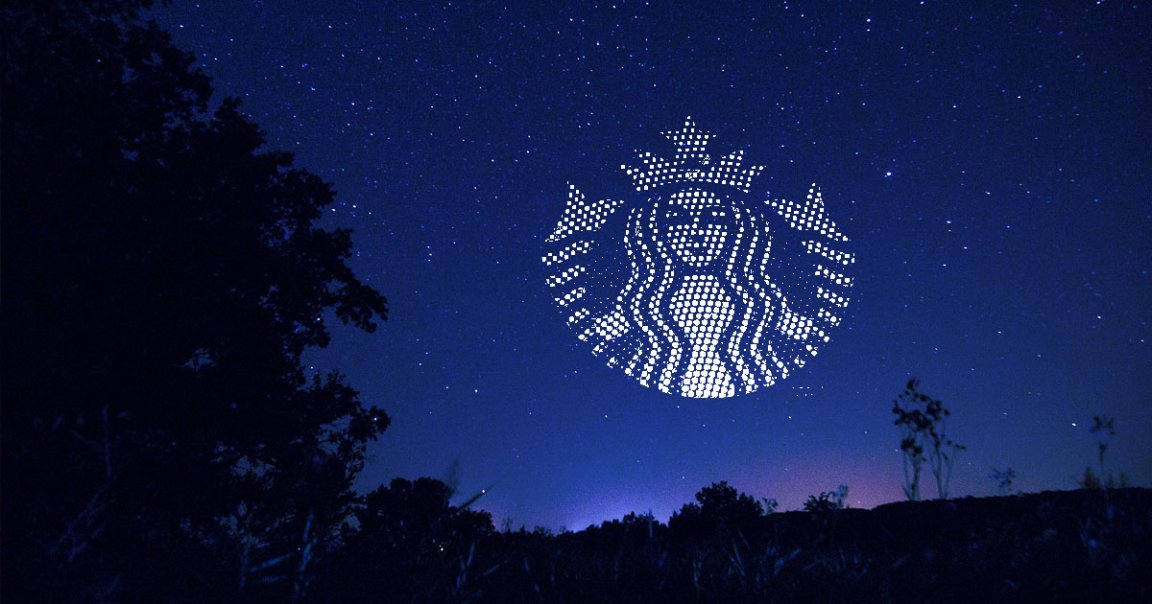
Russian researchers are suggesting we could send hordes of satellites into space to display commercials in the night sky over cities by reflecting sunlight in vast formations.
It’s a deeply obnoxious vision of the future that’s bound to irritate astronomers — who are already struggling with highly reflective satellite constellations ruining their observations — as well as anyone who appreciates an unobstructed view of the night sky.
In a new paper published in the journal Aerospace, researchers from the Moscow-based technical institute Skoltech and the Moscow Institute of Physics and Technology concluded that sending a formation of satellites into orbit to display commercials above population centers could not only be feasible, but cost a mere $65 million per mission.
“We’ve been studying some of the more technical aspects of space advertising for a while now,” said first author Shamil Biktimirov, a research intern at Skoltech’s Engineering Center, in a statement. “This time we looked at the economic side of things and, as unrealistic as it may seem, we show that space advertising based on 50 or more small satellites flying in formation could be economically viable.”
Each individual “pixel” or satellite of the space billboard would have to be pretty massive to reflect enough light and make the whole thing financially feasible.
Biktimirov suggested each cubesat satellite could be as large as a 350-square-foot solar sail, referencing the area of LightSail 2, the largest solar sail to have ever been sent to space so far.
Biktimirov and his colleagues calculated that revenues would depend on a number of factors, including “cloudiness, cold weather keeping folks indoors, and the city’s demographic composition.”
The satellites wouldn’t be displaying a single ad from a single brand, rotating through a number of different ads over the next most profitable city within reach.
But the approach has one big drawback as well. Since the satellites work by reflecting sunlight, they’d only really be visible around sunrise and sunset, and not at night.
That could also stop these satellites from messing with ground-based observations of the night sky, the researchers conclude in their paper.
But under ideal circumstances, they claim, a 91 day campaign could generate $111 million after expenses.
Would brands even be willing to take a plunge, though, by using their slogans and logos to litter the sky? If past efforts are anything to go by, that’s far from a given.
In 2019, Russian startup StartRocket similarly suggested displaying massive billboard-style advertisements in the night sky.
“We are ruled by brands and events,” project leader Vlad Sitnikov told Futurism at the time. “The Super Bowl, Coca Cola, Brexit, the Olympics, Mercedes, FIFA, Supreme and the Mexican wall. The economy is the blood system of society.”
Three months later, StartRocket announced it had signed a contract with PepsiCo to send an “orbital billboard” into space — but the beverage maker revealed soon after that it had dropped any plans to pursue such a venture with the startup.
The idea of sending microsatellites into orbit purely to have them display advertisements has already proven controversial to say the least, with astronomers advocating “for a night sky that is free of this kind of activity and remains as accessible to all humanity as possible,” as University of Michigan astronomer Patrick Seitzer told Astronomy back in 2019.
Whether advertisers will be willing to be associated with such a practice remains to be seen — but it’s probably unlikely.
More on space billboards: Pepsi Plans to Project a Giant Ad in the Night Sky Using Cubesats